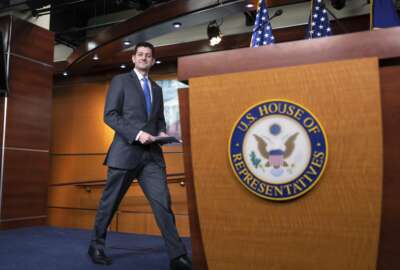
Pay raise, COLA and retirement changes: Can feds make it to 2019?
The metro Washington, D.C. area is now solidly blue and many local members of Congress will be eligible to lead committees that can affect active and retired...
Whether your midterm election party turned out to be a celebration or a wake, the Democratic take-over of the House next year bodes well for federal workers and retirees — provided they get to next year unscathed.
The metro Washington, D.C. area, home to between 12 and 14 percent of the total federal workforce, is now solidly blue. The four Senators from Maryland and Virginia are Democrats, as are all of the House members inside the Beltway. And many of them have seniority in the House, meaning that when the Democrats take control in January they will be eligible for chairmanships or key jobs on committees that can hurt or help both active and retired government employees.
Unlike many members of Congress from both parties, who write-off feds as swamp-dwelling bureaucrats, Washington area politicians of both parties get it. They know that fed family members are the largest voting blocs in their districts. When you represent people who work and vote nearby at places like the Pentagon, Ft. Myer, CIA, NSA, National Institutes of Health, NIST, Walter Reed and Quantico you don’t get elected or stay in office by voting for pay freezes.
And you don’t get elected by supporting plans to charge current federal and postal workers more for their retirement plan, while at the other end eliminating all inflation protection — cost of living adjustments — for current and future retirees.
In recent years most of the pay and pension “reforms” aimed at feds came from a relatively small but influential group of House Republicans and the White House itself. Because of the election most of those people will either be gone or move to minority status of key House committees.
Maryland Democratic Reps. Steny Hoyer and Elijah Cummings will get key posts in the new House. Both are veterans of working across party lines to get more generous pay raises for civil servants. Reps. Gerry Connolly (D-Va.) and Jamie Raskin (D-Md.) will also get influential posts in the new Congress. Both are well aware that feds form their political base. Meanwhile newly elected Democrat Abigail Spanberger from Virginia, who will take Dave Brat’s seat, had worked for the CIA.
Federal retirees are due a cost of living adjustment in January. That will be 2.8 percent for those under the Civil Service Retirement System and 2 percent for Federal Employees Retirement System participants. The House is set to consider a 1.9 percent pay raise already approved by the Republican-dominated system. Proposals to cut back and charge more for both FERS and CSRS retirement programs are still out there.
But as of the election they are now on legislative life-support.
Questions about TRICARE’s first-ever open season? We’re listening.
As Federal News Network reported last week, the Defense Department is currently holding its first-ever open season for TRICARE to let recipients pick between two healthcare plans. DoD said it is a better way for beneficiaries to pick their healthcare plan, but some military family advocates fear it could leave participants stuck in a lackluster plan.
TRICARE Chief Patrick Grady will speak with Mike Causey later this week and we want to hear from you. Send any questions on TRICARE for Grady to mcausey@federalnewsnetwork.com now until noon on Thursday, Nov. 15 for the chance to get your answer on the air.
Nearly Useless Factoid
By Amelia Brust
Twitter’s bird mascot has a name: Larry, as in former Boston Celtics player Larry Bird. Twitter co-founder Biz Stone graduated from high school and attended college in Massachusetts.
Source: Mashable
Copyright © 2025 Federal News Network. All rights reserved. This website is not intended for users located within the European Economic Area.
Mike Causey is senior correspondent for Federal News Network and writes his daily Federal Report column on federal employees’ pay, benefits and retirement.
Follow @mcauseyWFED
Related Stories





